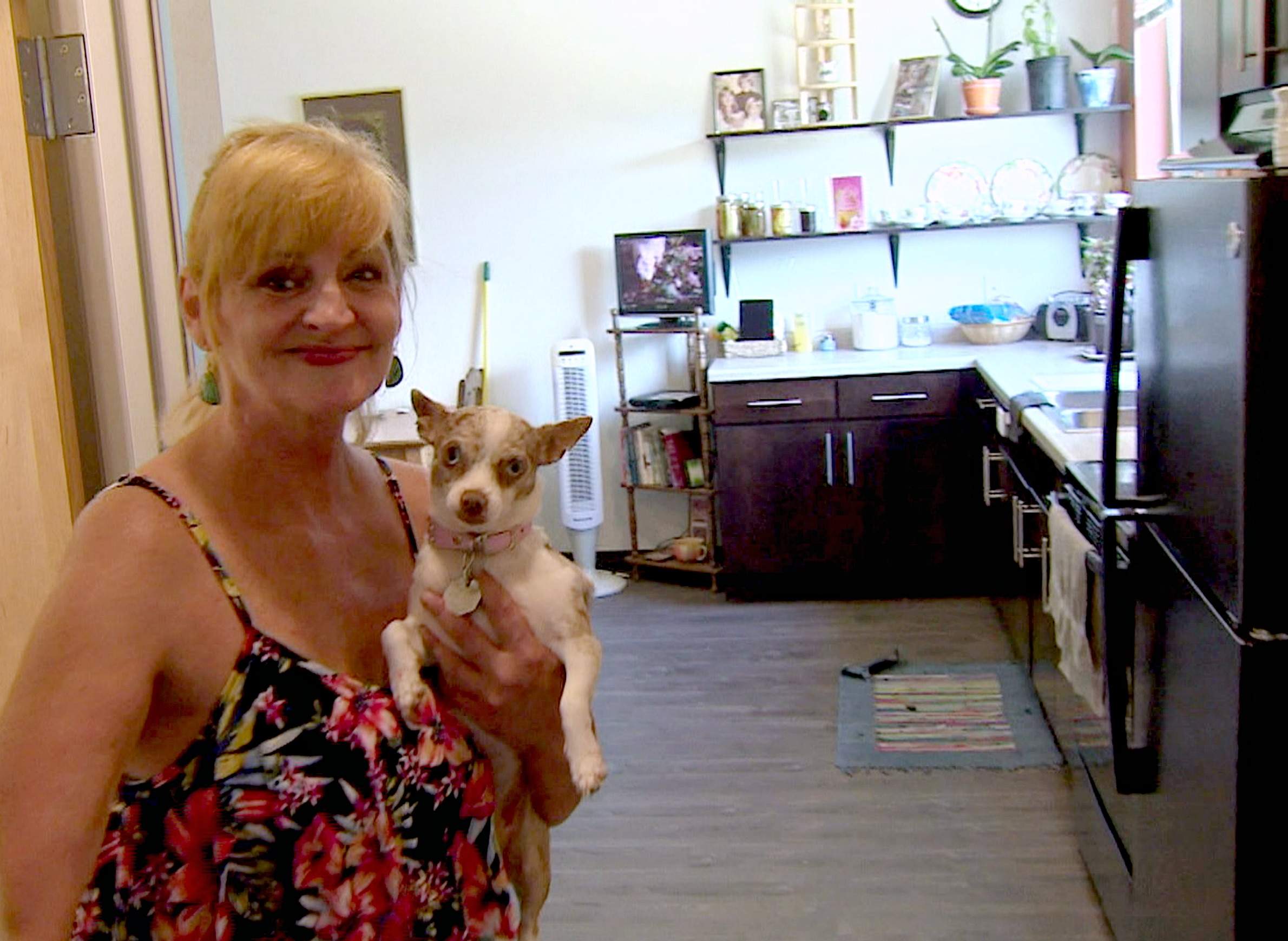
Jenniffer Shields is a resident of Rethke Terrace, a new "housing first" initiative in Madison.

Jenniffer Shields is a resident of Rethke Terrace, a new "housing first" initiative in Madison.
At the end of July, volunteers will fan out across Wisconsin and attempt to count homeless people in their communities' shelters and streets. The twice-a-year process is known as a "point in time" count. Nonprofits that serve the homeless organize these counts across the nation and send their data to the federal Department of Housing and Urban Development, which assembles it into an annual report that details homeless populations across the country — by state, and in certain large metro areas.
In Madison, the count will happen as Mayor Paul Soglin pushes for a city ordinance limiting when homeless people can sleep on public sidewalks. He proposed similar rules in 2015, but the Madison Common Council rejected them in October of that year. A couple months earlier, the council overrode a veto by Soglin veto to pass a different ordinance declaring the homeless a class protected from discrimination. The capital city's frequent clashes over homelessness even drew the attention of The New York Times in September 2015.
In a July 15, 2016 report on Wisconsin Public Television's Here And Now, Soglin explained that the new ordinance proposal targets 20 or so chronically homeless people who reside in downtown Madison.
"In recent months, we've got a considerable number of people who are sleeping in public areas, and by 8, 9 o'clock in the morning, when everybody else is going to work, going to school, and trying to enjoy the public space, they're walking through an area that looks like someone's disheveled bedroom," he said.
Brenda Konkel, former Madison alder and current director of Madison's Tenant Resource Center, sees a different reality. New developments are filling central Madison with expensive apartments, making it harder for people to transition from homelessness to stable housing.
"Some of the one-bedrooms are $1,000 now, and people are just really struggling to be able to pay that amount of rent," Konkel said on Here And Now. She added that the spotlight Soglin is putting on homeless people will only make it more difficult for those who are trying to convince landlords to give them a chance.
Even before one factors in the expense and stigma homeless people might face when trying to apply for an apartment, it's not clear when or if there will even be enough places for them to potentially call home. The most recent federal count of homeless people found 771 people living in shelters or public spaces around Madison. Meanwhile, a 2015 report from the city's planning and development department found that Madison's overall rental vacancy rate is 2.5 percent. In Madison's central zip codes, that drops to an average of 2 percent.
"Multifamily vacancy in Madison remains at 2-3 percent, meaning that 1,000 new units could be added tomorrow without pushing vacancy above 5 percent (a generally accepted standard for a healthy vacancy rate)," the report stated.
About three miles east of downtown Madison, nonprofit developer Heartland Alliance Housing is bringing the "housing first" approach to the city with the newly opened Rethke Terrace project. Its 60 single-occupant units apply the idea that the best way to help homeless people is simply to provide them a home, which is intended to provide stability that allows them to more effectively tackle problems like getting and keeping a job, and improving their health. Heartland is also working on a 45-unit building on Madison's west side that will apply the housing-first idea to homeless families. Another Dane County organization, YWCA Madison, also uses the housing first model.
The Milwaukee County Housing Division is developing a housing-first approach to tackle homelessness there, too. Advocates of this idea point to its application in Utah, though skeptics have questioned whether the state's statistics exaggerate the program's impact.
One of Rethke Terrace's new residents, Jenniffer Shields, explained the housing-first approach to Here And Now: "Once you get stable, you can take a shower in the morning, you can eat breakfast, you can get dressed, you have a place to keep everything, and then you're able to maintain, get on the bus, go to your meetings," Shield said. "But when you're just out there, that just doesn't happen."